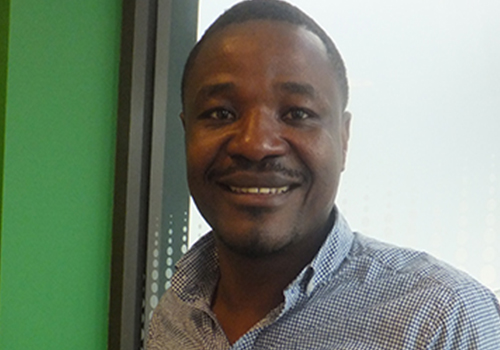Meet Samuel, Peer Educator and member of the Multicultural Community Action Network

The Multicultural Community Action Network (MCAN) is intended to develop long term partnerships that will bring together peer educators, other relevant community leaders and CEH.
Samuel Sakama is a peer educator who has made a significant contribution to his community. He explains why he joined M-CAN and why it’s important to him.
How did you get involved in the Multicultural Community Action Network (M-CAN?)
Actually it started well back in 2010 when I attended a conference here in Melbourne. The theme of the conference was ‘Diversity in Health’. People from around the world were discussing various issues related to refugee and migrant health. I met staff from CEH who invited me to be a peer educator. The peer education program was very exciting and has now been developed to be a Multicultural Community Action Network (M-CAN). I am happy to be part of this new program.
Why do you think other people from the community should be involved in this new initiative?
I think other community members who have the capacity should support initiatives like this. They will provide a platform from which culturally sensitive information is disseminated to their communities – in ways that are culturally appropriate. I think in terms of accessing sexual health information, there is a huge gap between multicultural communities and mainstream communities. This gap can only be filled if members of the multicultural communities are given the opportunity to play a leading role in discussing sexual health issues with their own people.
What are some of the advantages for being involved in M-CAN?
One of the greatest benefit of being involved in M-CAN is that you get a lot of satisfaction by being involved in health promotion issues in your own community. Community leaders are consulted on a variety of health issues and CEH will provide additional skills to participants who may want to use these skills as pathways to employment.
Related Information
Connecting with communities using Health Literacy principles
Plain language is essential for effective communication. When health information is presented in plain language, it is easier for people to understand. This is particularly important when dealing with diverse communities where English may not be the first language for many residents.
Co-design: what, why and how?
We know that collaboration is an important step in engaging diverse communities in services, particularly those that face certain barriers such as linguistic and cultural differences, lack of awareness of services, and limited access to information. So, how can we collaborate with these communities? Read on for our thoughts.
The Arthur Kleinman Explanatory Model
This model was first proposed by Arthur Kleinman, who developed a set of eight questions to ask a client to learn more about their explanatory model to provide better patient-centered care.
Addressing challenges to work cross culturally; new cultural competence bundles
When there are gaps in cultural awareness and language, there are more misunderstandings, biases and sometimes compromised health outcomes. The good news is that there is so much we can do to be more prepared.
